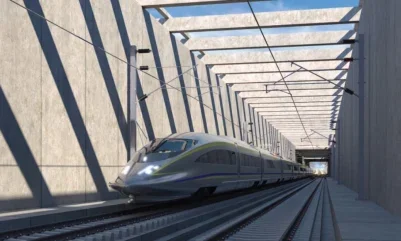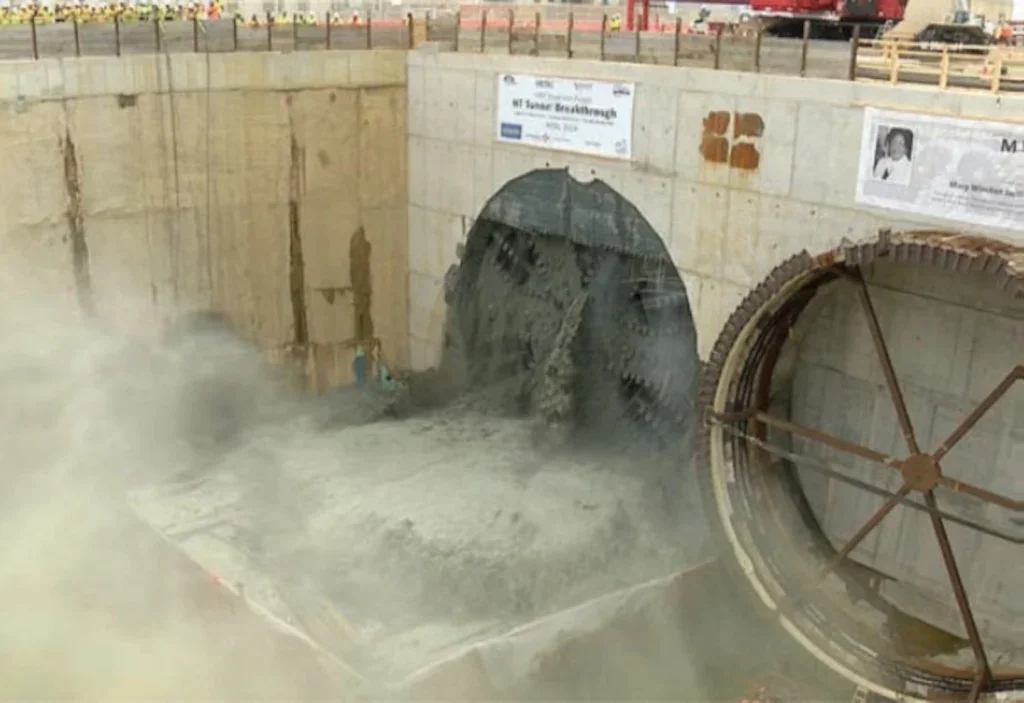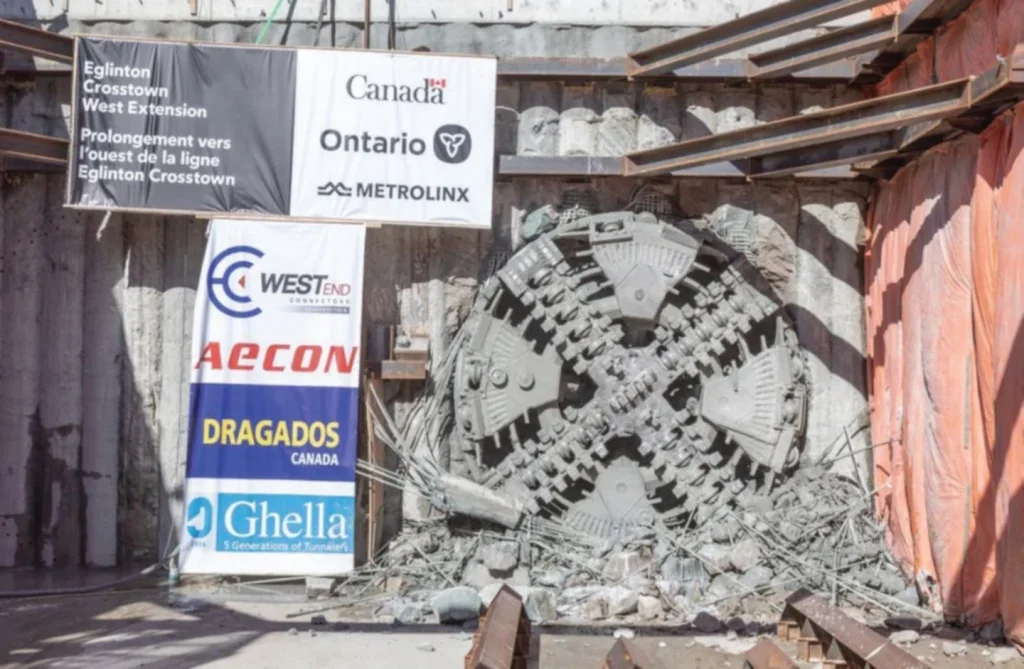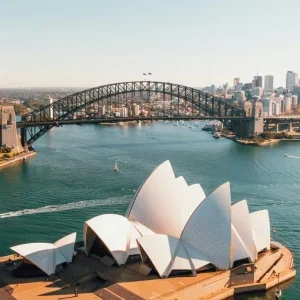
From plans and progress in California to milestone starts and breakthrough on the US east coast, and breakthrough in Canada, there is much activity to take forward the development of more tunnel projects across North America.
US: CALIFORNIA High-Speed Rail
The California High-Speed Rail Authority recently released the final environmental document for the planned new line between San Francisco and Los Angeles.
The document covers the mostly underground segment through mountains between Palmdale and Burbank in southern California.
The Final EIR/EIS includes analysis of all six build alternatives – one of which is the ‘No Project’ alternative. The preferred alternative – SR14A Alternative – runs along State Route 14. This alternative is for a gradeseparated, high-speed rail-only system with tunnels through Acton and much of the Angeles National Forest and the San Gabriel Mountains National Monument.
There are more than 25 active construction sites in the Valley, with environmental approval cleared for the high-speed rail to run from the Bay Area to Los Angeles County.
The rail authority’s CEO, Brian Kelly, said in a statement: “This is a huge milestone for the project and it represents the culmination of years of analysis and stakeholder engagement to connect high-speed rail between two of the state’s major metropolitan centres, San Francisco and Los Angeles.”

LA Metro
Tunnel construction was completed recently on the D Line Subway Extension in Los Angeles.
The extension project connects Downtown LA with West LA. The underground works required not only tunnelling through one of the most densely populated urban corridors but also dealing with challenging geological conditions.
A 21ft (6.4m)-diameter closed face TBM was used to build the 9 miles (14.5km)-long tunnel, and recorded an average daily advance of 39.4ft – 59.0ft (12m-18m).
It is the longest tunnelling project through tar sands in southern California and during the five years of excavation it faced many technical challenges, including gassy ground and abandoned oil wells.
With the completion of tunnelling, the project owner, LA Metro, will continue to work with its two contractors as a part of a JV with Skanska-Traylor-Shea and Tutor-Perini/O&G to complete seven new underground stations: Section 1 between Wilshire/Western and Wilshire/La Cienega; Section 2 between Wilshire/ La Cienega and Century City; and, Section 3 between Century City and Westwood.
Section 1 is scheduled to open in 2025, Section 2 in 2026, and Section 3 in 2027.

US: VIRGINIA
The Hampton Roads Bridge-Tunnel (HRBT) Expansion Project recently marked a major milestone when the single TBM on the twin-tube project recently broke through.
HRBT is Virginia’s first bored road tunnel.
The 46ft (14m)-diameter variable density TBM has been designed for the soft soils of the Hampton Roads region. It was launched in April 2023 to bore a 1.5 miles (2.4km)-long tube from the South Island (Norfolk side) to the North Island, holing through into the reception pit.
The TBM is 143yd (131m)-long and installed 1,191 precast concrete rings. It excavated approx. 897,000 yd3 (685,800m3) of soil. Best daily advance was 37.6yd (34.4m), with 17 rings installed.
On North Island the machine is being repositioned for the return trip, boring the parallel tube back to the initial launch point on South Island.
The turnaround for relaunch is expected to take up to six months, allowing for relaunch in late Fall/early Winter.
The US$3.9bn HRBT Expansion is the largest ever highway construction project in Virginia. The project involves widening the current four-lane sections along nearly 10 miles (16km) of the I-64 corridor in Norfolk and Hampton, with the new twin tunnels across the harbour – which has existing tunnels.

The new tunnels run approx. 16.4yd (15m) deeper than the existing tunnels, with the deepest point 57.8yd (52.8m) below the water surface.
All other tunnels in Hampton Roads are immersed tubes.
CANADA
In Toronto, one of two twin TBMs digging the western underground segment of Eglinton Crosstown West Extension recently achieved final breakthrough on its drives.
The 750-tons, 143yd (131m)-long TBM – ‘Rexy’ – completed the journey at the Scarlett Road extraction shaft, where it – and sister TBM ‘Renny’, following close behind – will be disassembled and removed from the ground.
TBM Rexy spent the past two years digging one of two 3.9 miles (6.3km)-long tunnels that stretch from Renforth Drive to Scarlett Road, where the future line will come to the surface and transition to an above ground section.
The Eglinton Crosstown West Extension is 5.7 miles (9.2km) in length and will bring the future Eglinton Crosstown LRT service farther west through York, Etobicoke, and into Mississauga. The project includes seven new stations.

TBM Renny is constructing the parallel tube tunnel. West End Connectors, a consortium of Aecon, Dragados and Ghella, was awarded the Advance Tunnel contract in 2021 and launched the two TBMs in 2022.
As TBM boring comes to an end for the machines, work will continue at the extraction shaft to lay the foundations and form the structure of the future tunnel portal.
Work has also started to prepare construction sites for the eastern underground segment of the line that will run from east of Jane Street to Mount Dennis Station.
In February, Strabag was awarded the Advance Tunnel 2 contract to design, build and finance this section. The contract includes a 546 yd (500m)-long tunnel from east of Jane Street to Mount Dennis Station.







